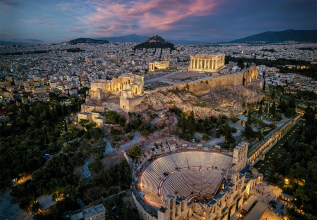3 MIN
TRAVEL TIPS
An anthropologist's point of view

Of all the villages of Crete Asi Gonia is special. It was the centre of resistance against the Venetians and Turks and Germans. The Battle for Crete in 1940 was a turning point as important as Stalingrad in the defeat of the Third Reich and Asi Goniots once again was at the centre with Pavlos Giparis and George Psychoundakis, key figures with Xan Fielding and Paddy Leigh Fermor working from the caves above the village.
George was mistakenly arrested as a collaborator and spent two years in jail after the war where he wrote The Cretan Runner. In 1967 George, not as famous as he is now, had managed to enrage the villagers by writing a satirical poem about a woman who had the audacity to wear trousers, managing to get the village cobbler beaten for this saucy work.
When I first went Asi Gonia was extremely poor and much of the housing was as it had been for hundreds of years—stone walls and mud roofs. Their ancient customs were then intact including mantinadha song contests and weddings with a thousand gunshots and prior to this time some say many rustled sheep.
Electricity came only in 1967. In that year the road was still very poor and often washed away in the winter rains. There was only one telephone at the police station. Only two cars, the taxi driver’s and mine. There was no television and the rich social life centred on the coffee shops and neigbourhood.
It was famous even then for its milk Festival on 23rd of April and the blessing of the flocks. Theodorakis composed a symphonic piece about it. Nowadays thousands of visitors descend on Asi Gonia for this event. Nowadays it has been modernized and the roads improved but the customs and wonderful humour of the Asi Goniots remain intact. They are very special people. I am sure they will welcome you with open arms.
Barrie Machin


